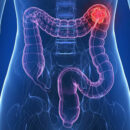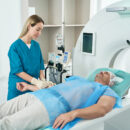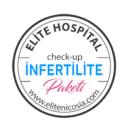What is Nerve Blockage Treatment in Migraine?

Nerve blocking methods are a method used in the treatment of migraine, especially with the aim of improving the chronic migraine patients who are resistant to drug therapy and reducing the amount of analgesics used.
Nerve blockade is an interventional treatment.
It is based on the application of various drugs to the nerves thought to be associated with the brain centers responsible for migraine attacks with special injection techniques and thus blocking the nerves.
It can be applied to many nerves associated with headache at the same time. It is most commonly performed on the nerve referred to as the greater occipital nerve (GON). Because this nerve is directly related to the trigeminovascular system, which is the brain region responsible for migraine attacks. Gon blockade has been shown to reduce the frequency, severity and duration of migraine attacks. Therefore, it can be used as a preventive treatment in the prevention of migraine attacks. It can be considered as an effective and safe treatment option for migraine patients who cannot use medication due to pregnancy and various reasons.
How does it affect?
Drugs applied to the greater occipital nerve with special techniques block reversible sodium channels in nerve fibers. Thus, the formation of pain stimuli in the area where the nerve is connected and associated with migraine headache is prevented.
How it is made ?
GON Block is applied to the back of the head. The nerve is fixed with the help of anatomical structures at the back of the head. After the greater occipital nerve is found, local anesthetic prepared in various doses is injected with special injection techniques. It can be applied unilaterally or bilaterally. After the injection, numbness and temporary loss of sensation occur in the application area. The procedure can be easily applied in a clinical setting.
How often should it be done?
In general, 3-5 injections can be made with an interval of one week. Monthly applications can also be made afterwards. It has been shown that repetitive GON blocking applications significantly reduce the frequency, severity and duration of migraine attacks. It should be decided by the practitioner physician, specific to the patient, to which patient and at what intervals.
Are there any side effects?
In addition to being effective, it is a very 'reliable' method. Side effects are very rare when applied properly and carefully.
Side effects such as injection site infection, subcutaneous bleeding, fainting sensation, decrease or increase in blood pressure, nausea can be seen in injections made to any part of the body. Rarely, hypersensitivity, allergic reactions, etc., depending on the local anesthetic used. side effects may occur.
Trigger Point Injection
1. What does trigger point mean?
Trigger points are knots and bands in muscle tissue. These points often cause head, neck, shoulder, back and low back pain depending on the region they are located. They are also called kulunç among the people.
Most viewed table is myofascial pain syndrome. Myofascial pain is a soft tissue origin pain caused by trauma, repetitive muscle activities and bad posture. It is usually associated with muscle contraction and is often seen in the neck region. Patients complain of neck and shoulder pain, sleep disorders and sometimes headaches. Improvement is achieved with the use of various medications, massage, ice applications and stretching exercises, and sometimes with trigger point injections into the superficial muscles. Myofascial pain may be resistant to treatment. But with aggressive treatment, improvement is achieved over time.
There are a significant number of trigger points in many parts of the body, especially on the nape, neck and scapula. Pain due to trigger points can be confused with many other diseases. They can be very severe at times and reduce quality of life.
2. What is the role of injection in trigger point therapy?
Trigger point injection is typically done by carefully administering a low dose local anesthetic into the trigger point. It is a simple method that provides excellent benefits in myofascial headaches and trigger point pains. Trigger point injection is not painful and can be repeated at regular intervals as needed. Its main mechanism of action is to weaken the focal point of muscle spasm.
Dr. Rasheed Bedouin
Anesthesia and Reanimation Specialist
Contact Us For Appointment:
Telephone line: 0392 444 3548 (ELIT)
Contact Form: https://www.elitenicosia.com/iletisim/

















